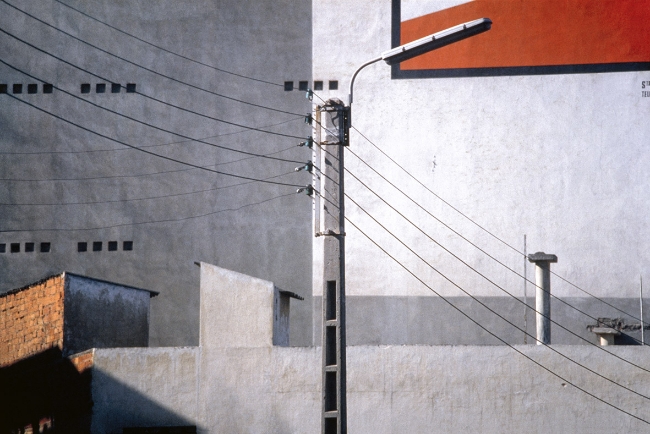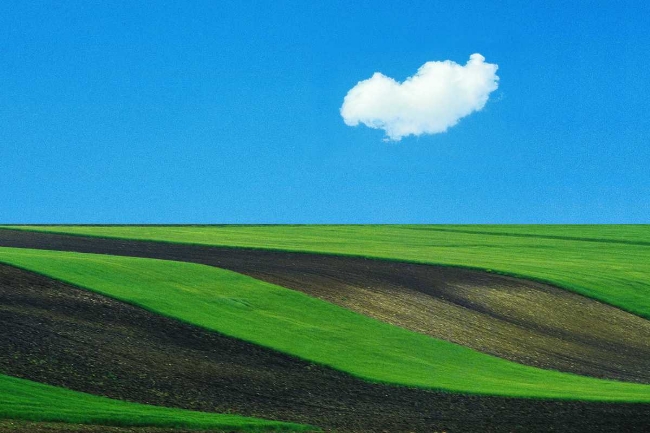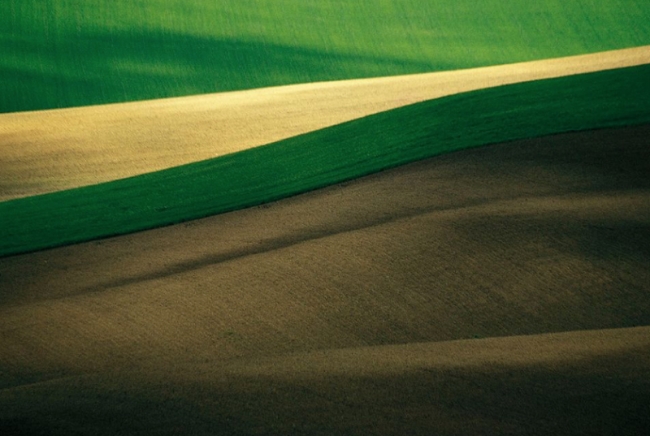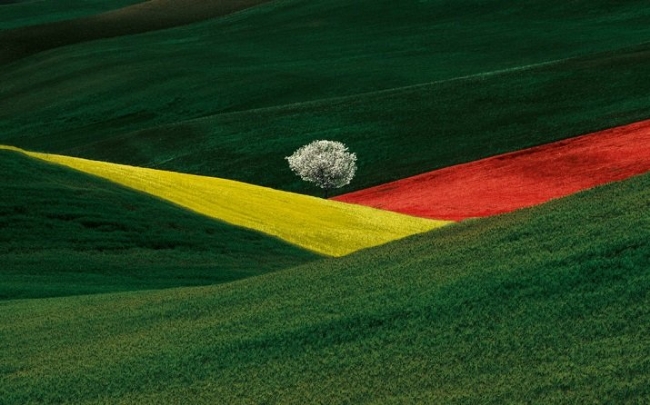Composition, down at the bone, is about geometry. Lines, shapes, angles, forms. Nowhere is that more obvious than in the landscape work of Italian photographer Franco Fontana.
Fontana was born in 1933 in Modena, a town best known for manufacturing Italian sports cars and balsamic vinegar. He was employed as a decorator in a furniture showroom when he took up photography in the 1950s. He photographed his furniture arrangements. After joining a local camera club in 1961, he became more serious about the craft as a means of expression. He had his first gallery show four years later. Although he is best known for his land and cityscapes, Fontana has also photographed street scenes and nudes. Those works have met with less success.
Color photography was still rather uncommon when Fontana began to practice it–uncommon and rather frowned upon by ‘serious’ photographers. Abstract use of color was even more radical.

Speaking of his landscape photography, Fontana says,
“I try to isolate in space and time all that is normally mixed up with an infinity of details. Extracting a few essential elements from the entirety that presents itself to the human eye is one of my inner requirements.”
Obviously, one of those essential elements is color. It’s the deep, saturated color that gives Fontana’s minimalist imagery its stunning depth and richness. It seems as if there ought to be a contradiction between the spareness of the composition and the lushness of the color, but any incongruity somehow seems to recede the longer one looks at the image.

The simplicity of imagery reminds us of the artificiality of the frame. It nudges us to realize the world extends beyond the limits imposed by the camera and the viewfinder. It’s exceedingly obvious that what Fontana shows us is only a very small part of the larger whole. Even though we only see a fraction of the world we get a sense of its immensity. This is particularly true of his landscape work.
One of the things I found surprising about some of Fontana’s landscapes was the sense of movement–both in in the landscape itself and sometimes in the sky above it. Part of this, obviously, is the sense of changing weather patterns moving across the stationary fields, of complete slow-moving weather systems shifting over the entire countryside, of cloud patterns sliding along the landscape, of a planet spinning on its axis. But the rolling hills also provide a sense of how the very earth itself is subject to pressure and change.

I’m particularly taken with his photographs shot in the Basilicata region of southern Italy. This is an area primarily of rugged, mountainous terrain, with a small portion of land suitable for certain types of agriculture. Hilly fields of wheat, maize, potatoes, olive orchards, and vineyards. In many of his photographs of the Basilicata, the only sense of scale comes from a tree–though we are at a loss to determine the size of the tree. The result of this absence of scale is a feeling of expansiveness, of infinite space. There is an almost palpable feeling of being on a planet.
Fontana, an interview, said this about photography:
“[It} should not reproduce the visible; it should make the invisible visible.”
I have absolutely no idea what that means. I’m guessing it relates to his other comment about isolating a few essential elements from a chaos of details. What I do know is this: Franco Fontana brings an intensely poetic eye to the world around him.
Fontana’s work resides in more than 60 museums, he’s been exhibited in more than 400 galleries, he’s done commercial work for a staggering number of corporations (ranging from Volkswagen to Versace), his work has been featured in more than 40 books in over a dozen languages–and he’s done all this with fairly simple equipment. Fontana relies on a Canon 35mm film camera and uses only three lenses: a 17–35mm zoom, a 35–350mm, and a 14mm prime lens.

Fontana, in his interviews, comes across as a man with a lot of enthusiasm. He’s found a way to earn a very good living practicing a craft he enjoys. He’s not entirely content with his success; he continues to try new things with his photography, but it appears he’s not the least bit discouraged when those efforts are met with limited success.
Whether or not you like his photography, you have to love his attitude.
